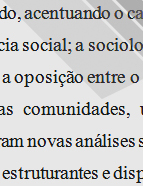

................................
( ACRONYMS – ARCL, Academia Real das Ciências de Lisboa; ARC, Academia Real das Ciências; DHP, Dicionário de Historiadores Portugueses ; DHPJS, Dicionário da História de Portugal , Joel Serrão; FD, Faculdade de Direito; FDUC, Faculdade de Direito da Universidade de Coimbra; FDUL, Faculdade de Direito da Universidade de Lisboa; FEUP, Faculdade de Economia da Universidade do Porto; FLUC, Faculdade de Letras da Universidade de Coimbra; FLUL, Faculdade de Letras da Universidade de Lisboa; FMUP, Faculdade de Medicina da Universidade do Porto; UC, Universidade de Coimbra; UE, Universidade de Évora; MJ – Ministério da Justiça)
However, until the end of the 19th century, the most notable case is undoubtedly Henrique da Gama Barros (1833-1925) with his History of Public Administration in Portugal in the 12th to 15th Centuries (4 volumes, 1885-1922). With a legal background and a professional career linked to public administration (Adviser to the Court of Auditors after working for the municipality of Sintra, the civil government of Lisbon and the Supreme Administrative Court), his work was carried out between 1865 and 1925, a period of consolidation of the positivist school. Indispensable to the study of medieval institutions, the work was, in his view, intended to “assess public administration in Portugal in all its aspects” (Volume I, Preface), that is, to understand the mechanisms of administration, it was not enough to know the law that governed it, it was necessary to penetrate the “heart of society” and also address the problems of property and civil and criminal justice. This explains why the first volume, which deals with law (written and traditional) and central administration, is followed by three others that cover the “economic situation of the country”, a term that encompasses the population and its relations with property, agriculture, fishing, industry and domestic and foreign trade, including legislation and taxes related to production and trade, the system of weights and measures and its evolution over time.
This work is financed by national funds through FCT - Foundation for Science and Technology, I.P, in the scope of the projects UIDB/04311/2020 and UIDP/04311/2020.
